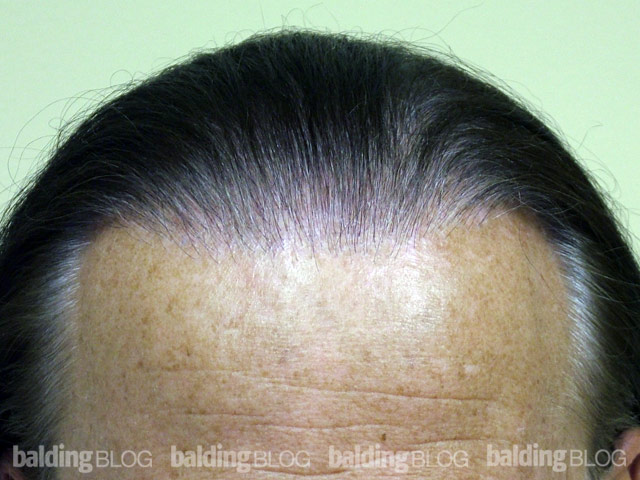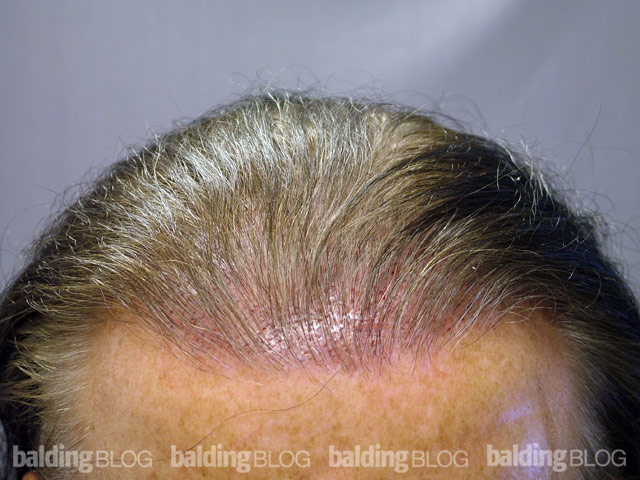I am 25 years old and I have thinning all over, I’ve been to two dermatologists and both of them just tugged on my head and told me to use Rogaine. I want to know how to find out what the cause is and if there might be an underlying health condition. I have never taken ANY medication including birth control but I may have some other symptoms, only slight but possible indications of something medical or hormonal. There is also no baldness in any women on either side of my family, but there are men on both sides. This is absolutely destroying me and I just want to figure out how to get some answers because Rogaine is not working, I’m running out of hope. Do you know where I can go or what I can do? Thank you for your time and consideration to my question, I would appreciate any suggestion you might have.
There is not a great deal understood about women’s hair loss. First, many women have hair loss secondary to a medical condition. You need to be check out by a competent doctor to rule out the conditions that cause hair loss. Thyroid disease, for example, seems to have hair loss associated with it. In addition to thyroid disease, hair loss can be a sign of a medical problem from anemia, connective tissue disease, gynecological conditions, polycystic ovaries and other androgen stimulating hormones. While you do not currently take any medications, some medications can cause hair loss including: oral contraceptives, beta-blockers, Vitamin A, thyroid drugs, coumadin and prednisone so at any time in the future, this awareness may have significant value to you.
The treatment of women’s hair loss with hair transplantation must be approached differently than men’s hair loss, as most women rarely develop patterned hair loss and it is much more widely distributed. In fact much of the hair remains, but the thickness of the hair shaft is smaller than normal hair and the areas that get impacted by this process can be localized or generalized. This reduction of hair thickness (miniaturization) causes the hair to appear thinner. Because a relatively large area has been subject to this thinning, for hair transplants to have any value it is important to place the hair in areas where it is cosmetically most significant and where it can augment a specifically “defined†styling plan to increase the appearance of fullness. Also, the ‘donor’ area might also be impacted so careful measurements of the donor density and distribution of miniaturization in the donor area is important before a transplant decision is made. For this reason, we generally confine the entire transplant process in women to a localized part of the scalp such as behind the “frontal hairline†or “along the part†in a plan that fits the way the woman combs her hair.
Since hair will be transplanted into a part of your scalp that is thin, but not completely bald, there is a risk that some or all of the original hair in this area may be lost. This process is called “telogen effluvium†and is usually (but not always) reversible in women. In addition, if the donor area continues to thin, then the transplanted hair will also thin over time, since it came from the same area. The progressive hair thinning may be improved by subsequent procedures, but with significant loss, there is a limit to the improvement that can be achieved. In hair transplantation, as in all surgical procedures, it is important to balance the potential gain against the possible risks when making a decision to go forward with the treatment.
Once you rule out a medical problem, then a doctor with knowledge about hair transplantation may be considered. The problem here is that too many women are so desperate for hair that any doctor wanting to offer a hair transplant to a balding women, set up a woman as an ‘easy mark’ for a sale. You must find a doctor who understands who can be helped and who can not be helped; a doctor who is honest and has a good reputation. There is an easy test to give to a doctor. Ask him/her, “What is the percentage of women patients who get hair transplants in your medical practice?â€. If he reports significantly more than 5% of patients are women, you can generally assume that he is doing more transplants on women than he should be doing. Some doctors claim that half of their patients are women and that puts me on an alert that this doctor may doing more hair transplants on women than he should be doing. Women have different aesthetic challenges than men, so patient selection is critical and when a doctor elects to do a woman’s hair transplant, he/she has to fully understand the art. The thing that makes women’s hair loss different is that their donor area is frequently not healthy and the recipient area is very diffuse. Moving bad hair to another area just moves the problem around without helping, unless the goals and expectations reflect the reality of that woman’s particular problem.



